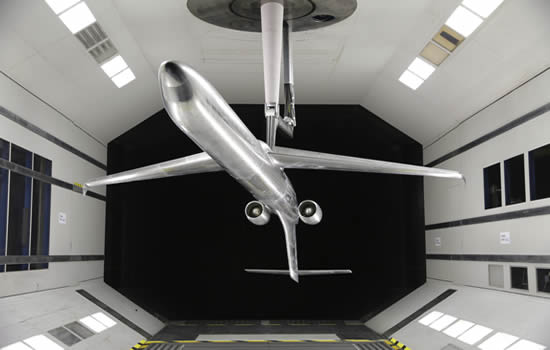|
The ESICAPIA and LOSITA consortia, with RUAG
Aviation as a member, have successfully developed
and tested wind tunnel models for simulating
emerging turbofan and propeller technologies.
These research projects were performed in the frame
of the Green Regional Aircraft ITD (GRA) of the
European Clean Sky aeronautical research programs.
Data generated from these research projects will be
applied to reducing the ecological footprint of
future aircraft.
The Clean Sky GRA programs ESICAPIA (Experimental
Subsonic Investigation of a Complete Aircraft
Propulsion system Installation and Architecture
power plant optimisation) and LOSITA (LOw Subsonic
Investigation of a large complete Turboprop
Aircraft) projects aim to optimise the
configuration, performance and alternative
propulsion systems on two different experimental
regional aircraft. RUAG Aviation is a member of two
international consortia led by IBK Innovation of
Germany, which were commissioned to develop models
of the two GRA configurations and investigate their
performance in tests at the RUAG Large Wind Tunnel
in Emmen (LWTE). One model was equipped with
propellers while the other featured a simulation of
a modern turbofan system. Both systems were
developed in-house by the RUAG Aviation department
of aerodynamics.
 |
|
ESICAPIA
model in LWTE wind tunnel. |
“Simulations using propellers are standard for
testing in the large wind tunnel,” says
Andreas Hauser,
Manager Department of Aerodynamics, RUAG Aviation.
“However, the turbofan simulators developed for the
ESICAPIA model were a first in our facility. The
challenges this presented were an opportunity for
the aerodynamics team to demonstrate their expertise
and their reputation for finding innovative
solutions.”
%20installed%20in%20nacelle.jpg) |
|
Turbofan
simulator (TFS) installed in nacelle. |
The RUAG engineers developed the power simulation
systems building on existing RUAG hydraulic engine
technology and know-how, and integrated them into
the Green Regional Aircraft wind tunnel models.
During subsequent wind tunnel testing, the
propulsors performed sound. The Green Regional
Aircraft model tests proved a complete success and
generated a valuable aerodynamic database, including
power effects and acoustic data. The experience
gained from developing the turbofan simulator for
ESICAPIA is already supporting the development of a
new, smaller and higher performance turbofan
simulator. Also, the RUAG wind tunnel testing
portfolio has been expanded, adding new capabilities
to the benefit of customers.
“Ultimately, this type of research brings benefits
to everyone - in the form of a cleaner environment
and a sustainable future for aviation,” says Hauser. |

